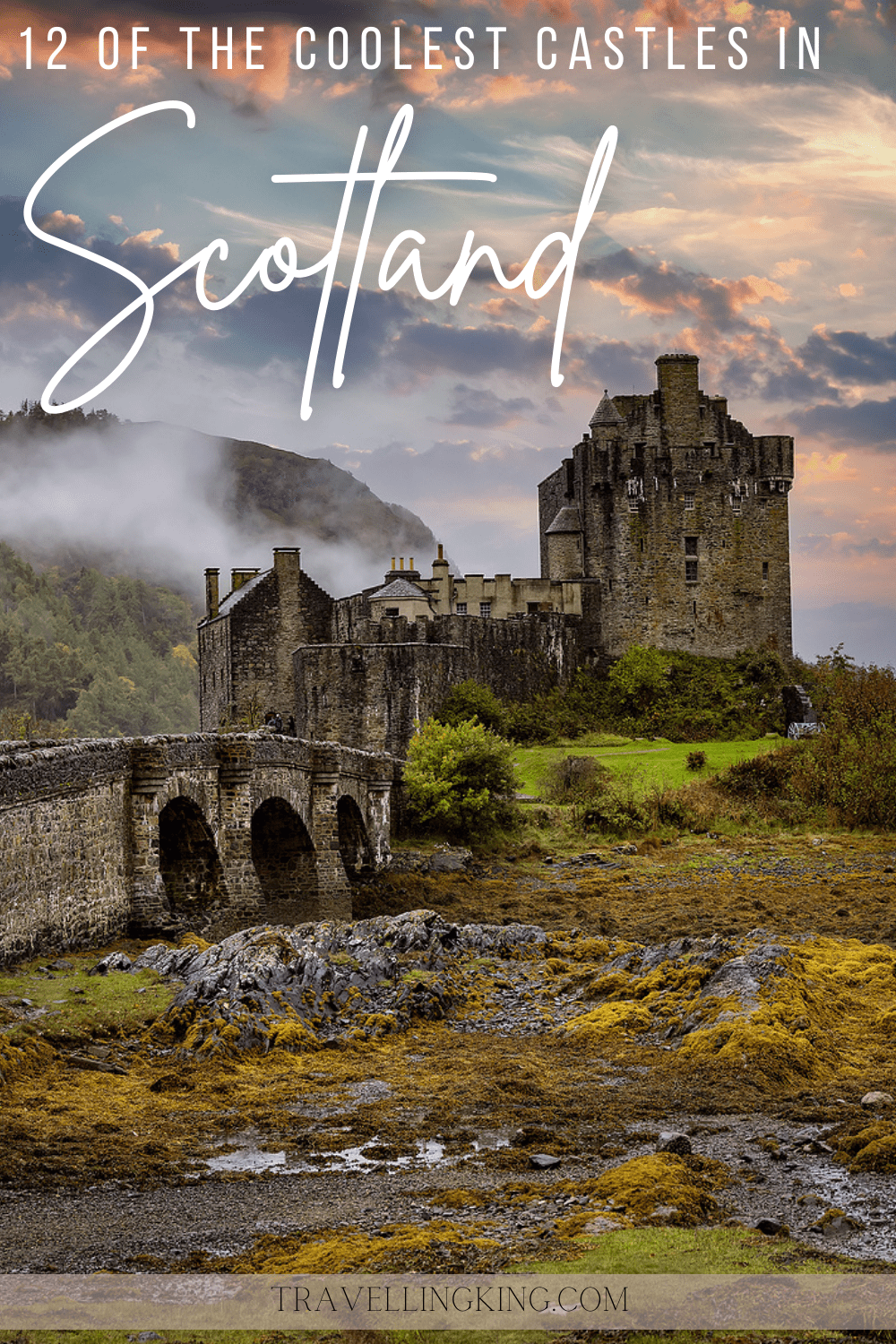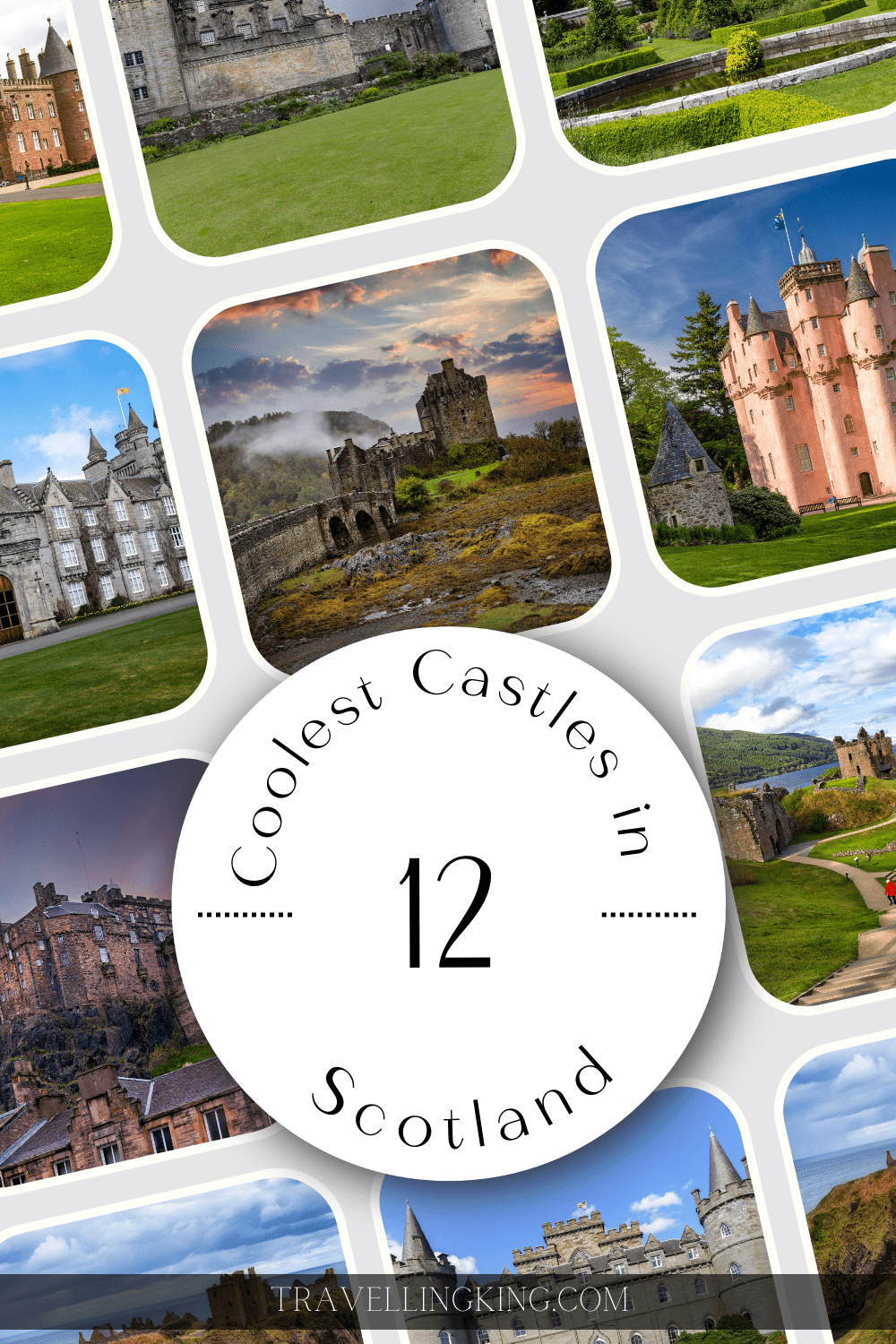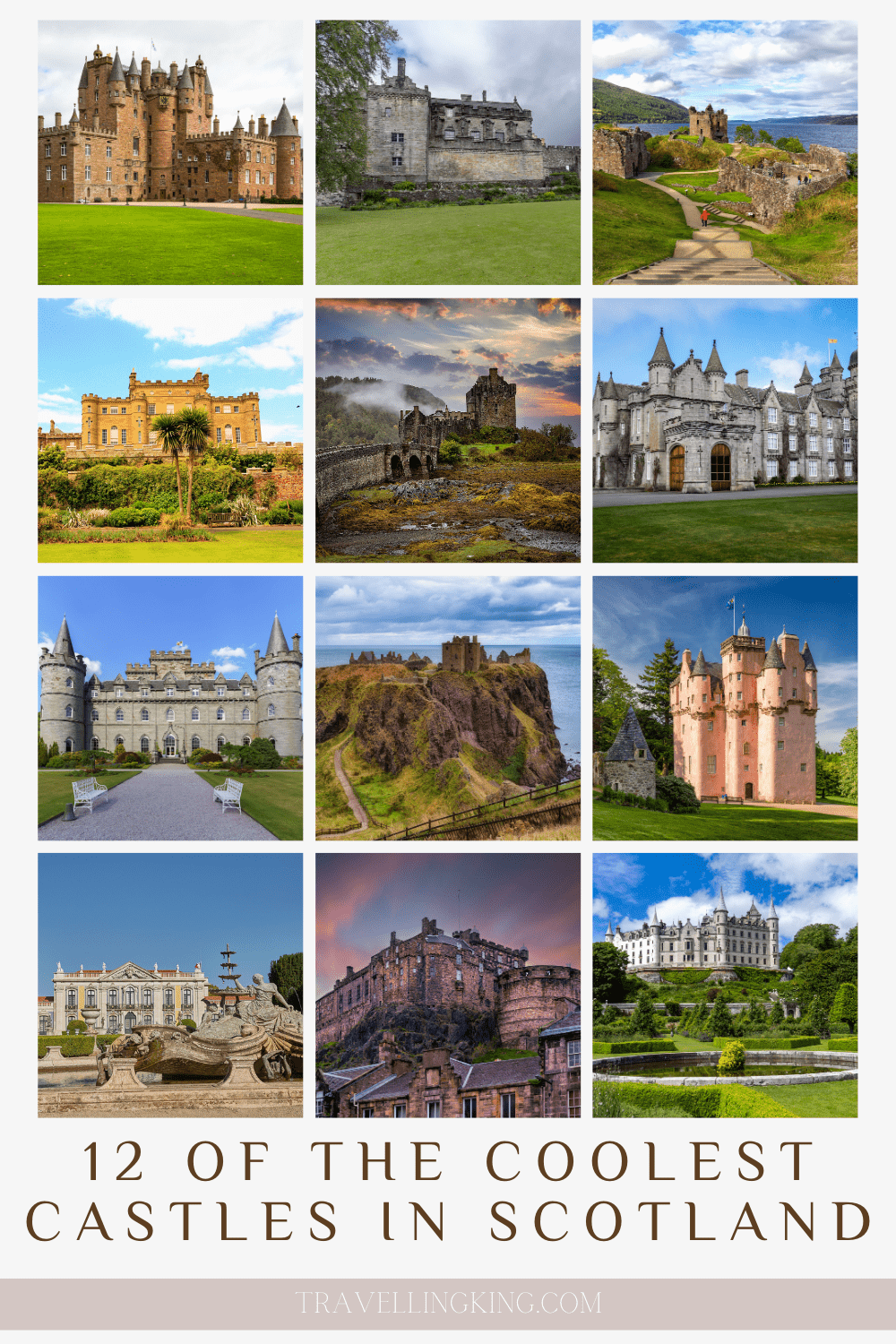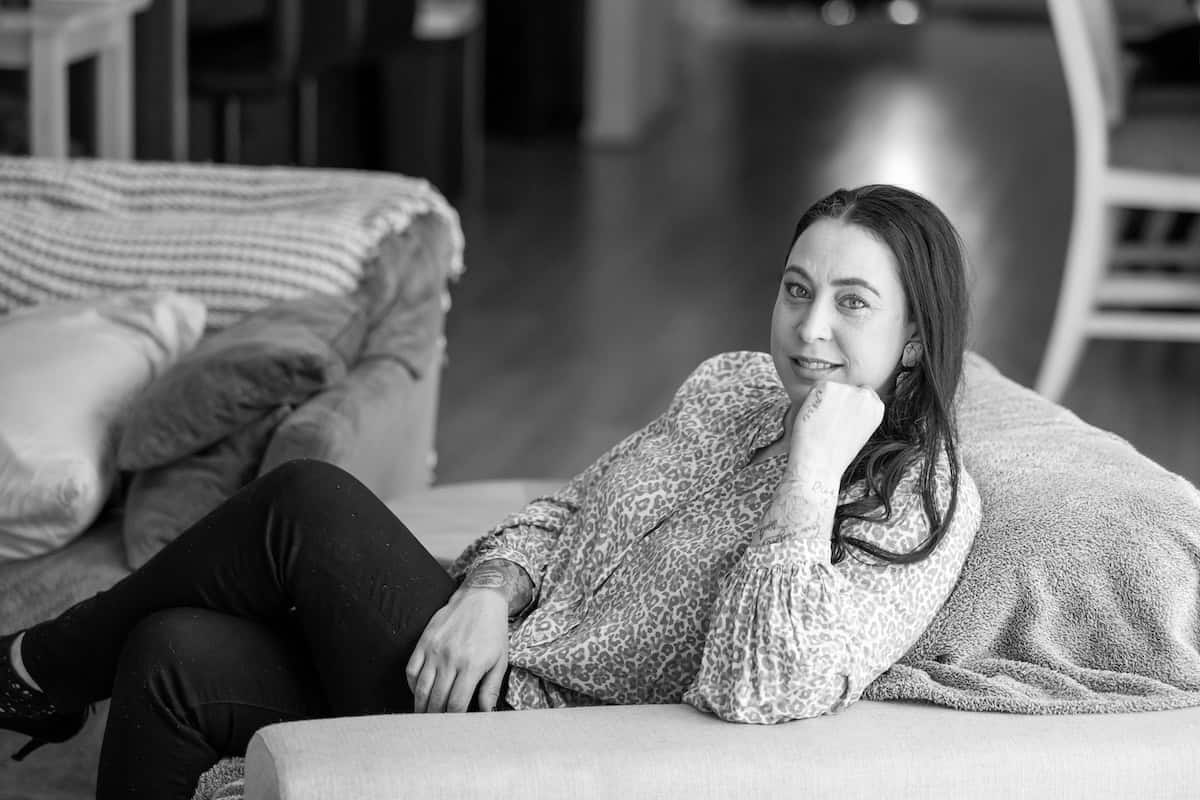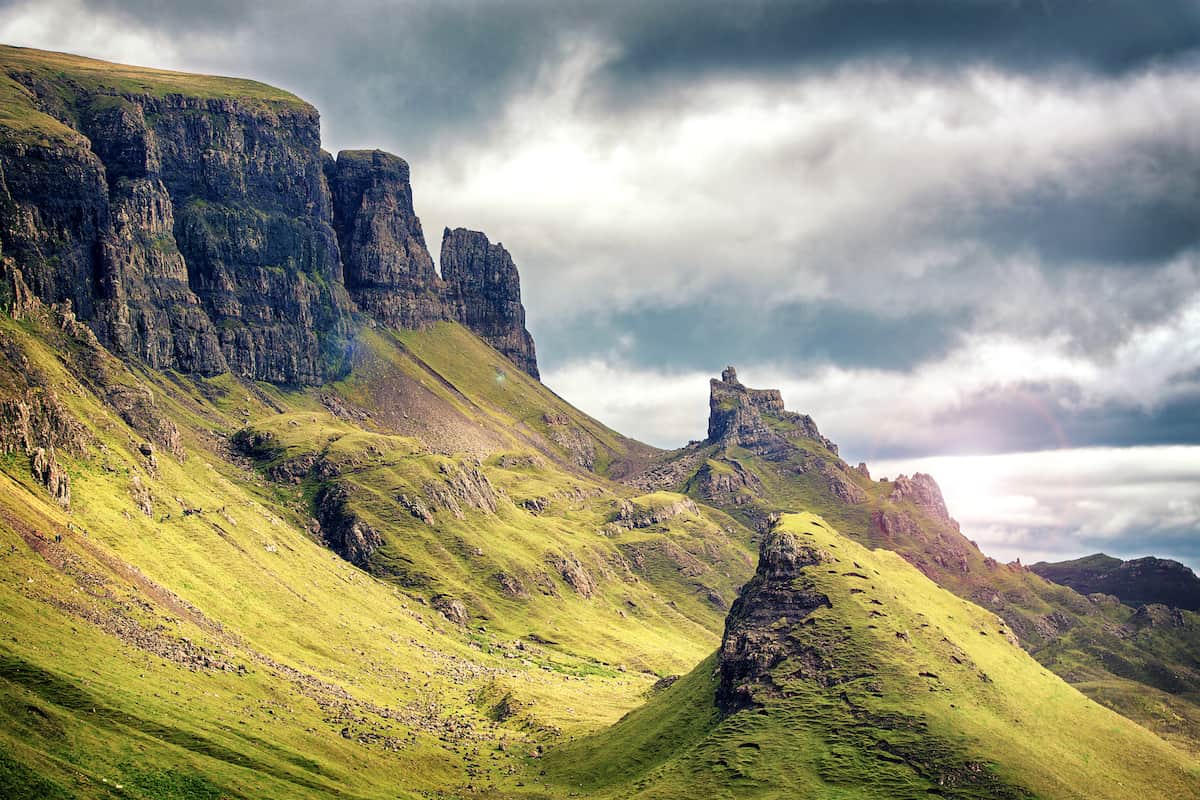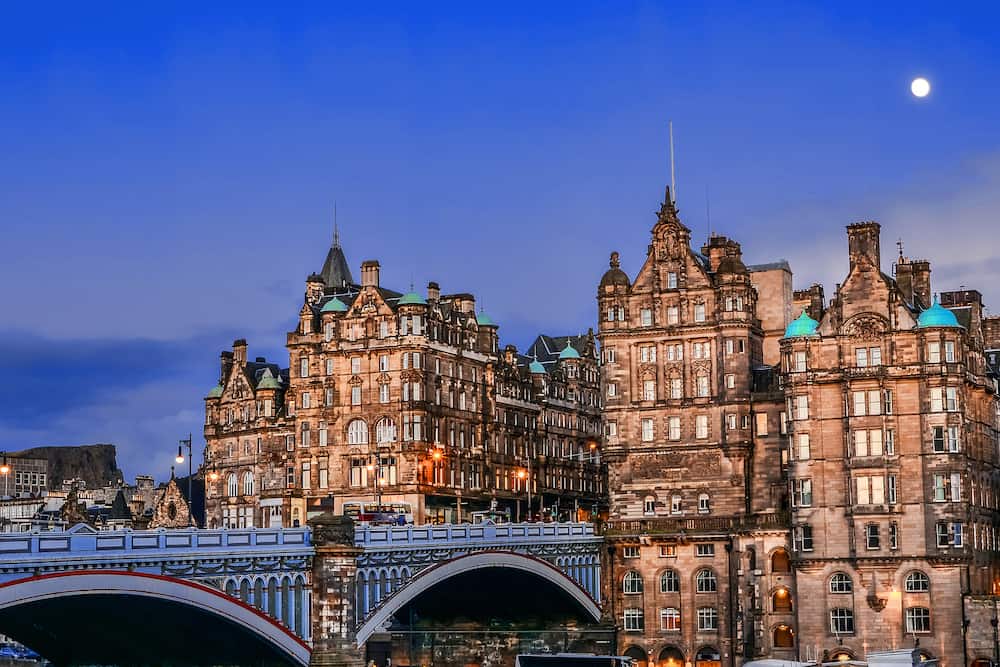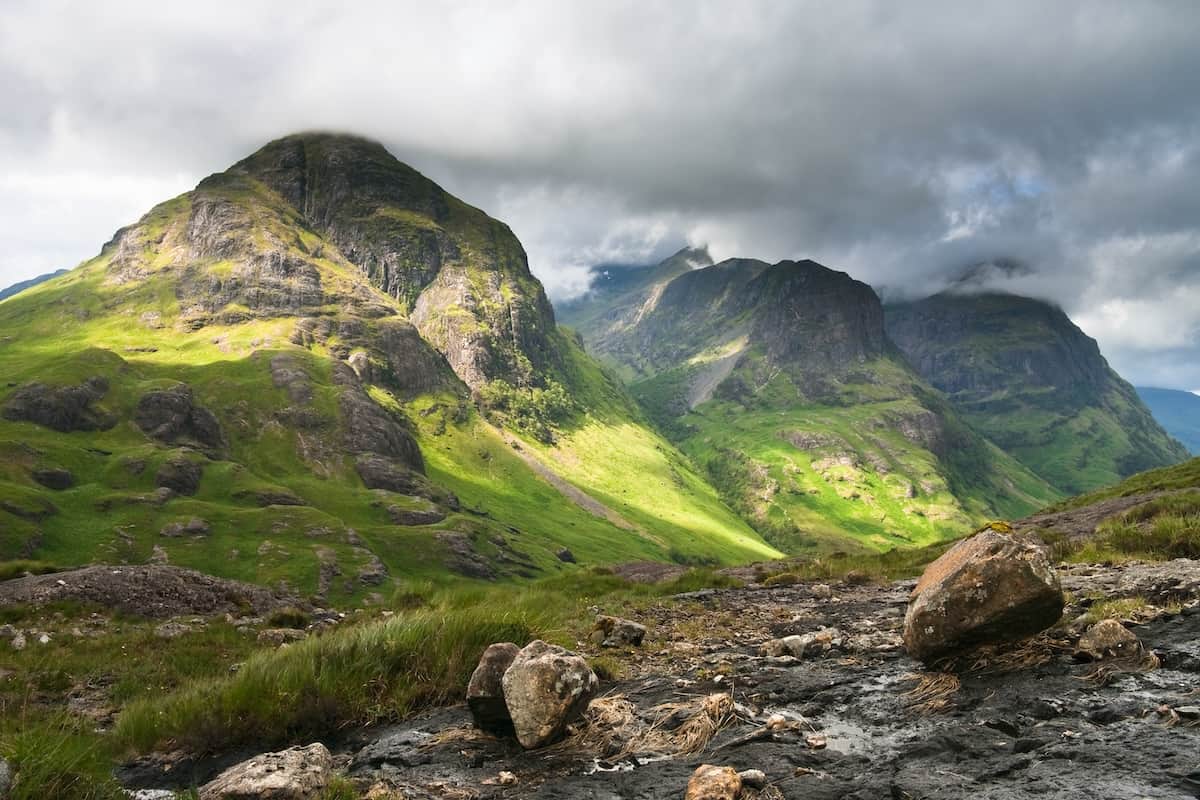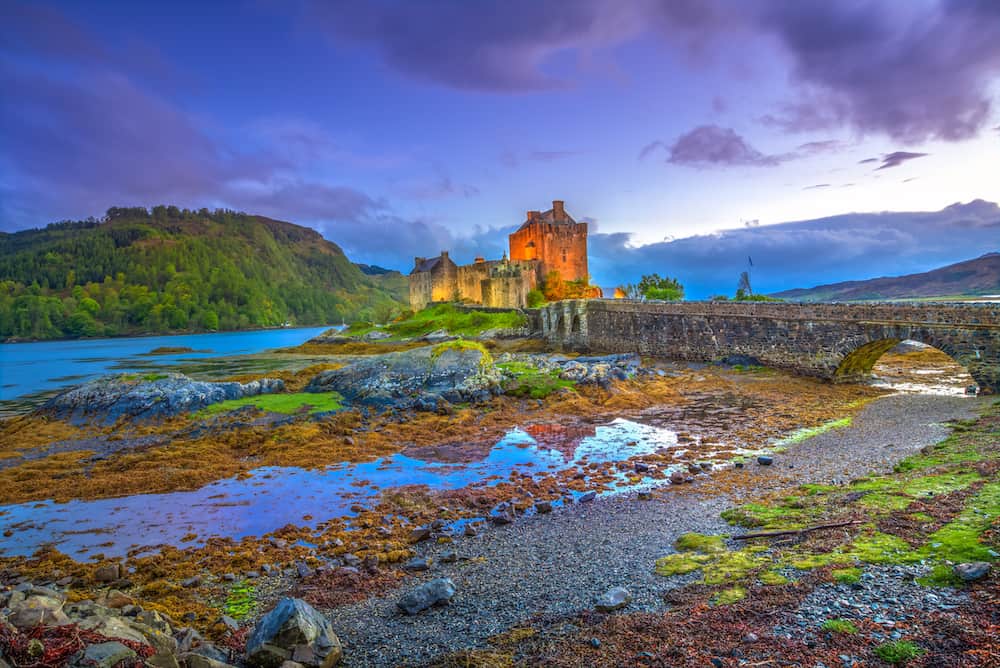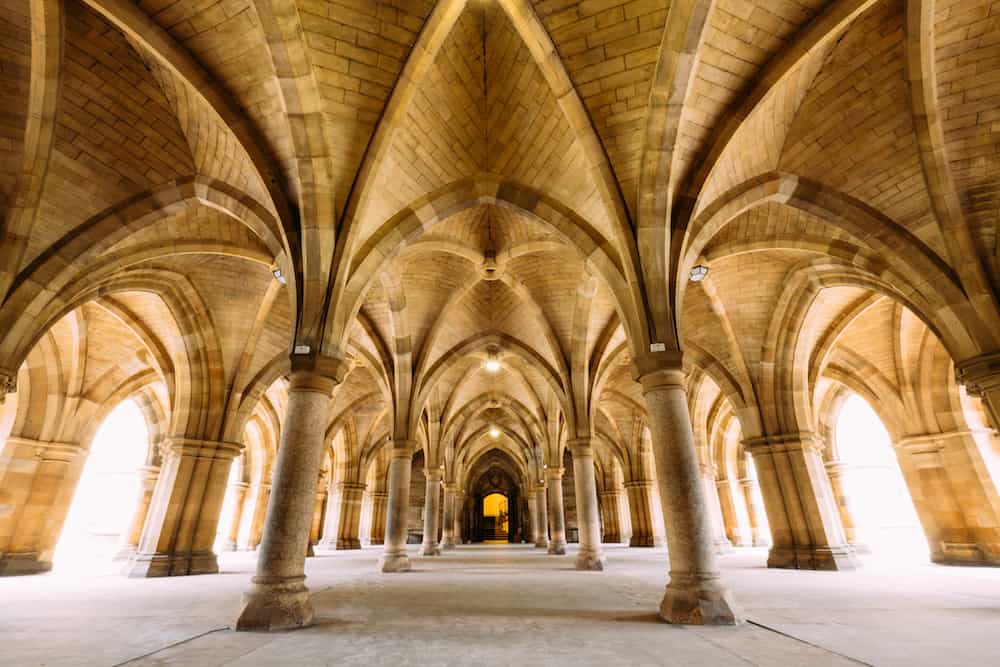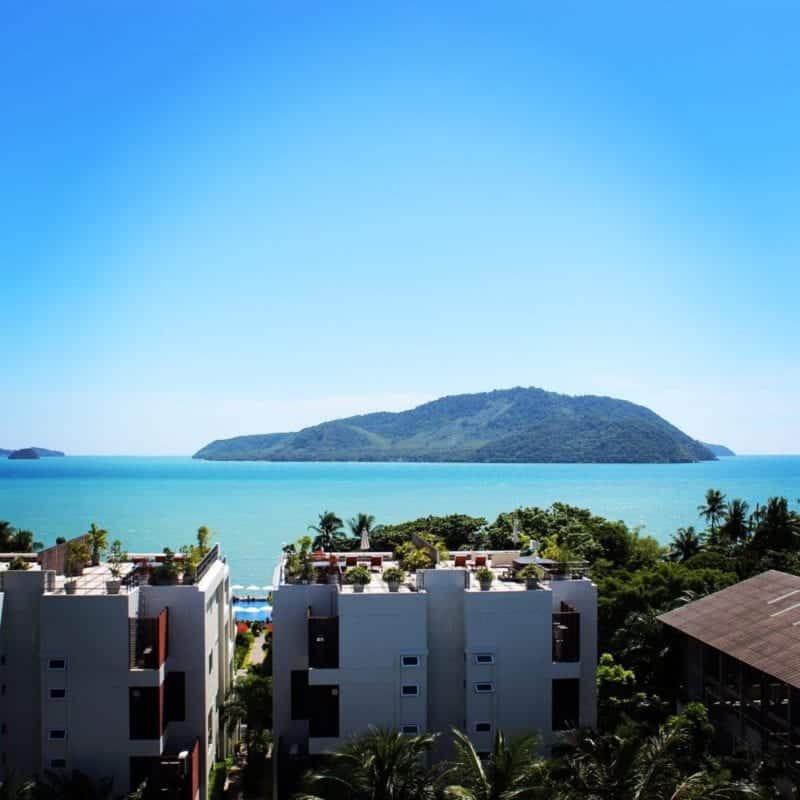12 of the Coolest Castles in Scotland

No matter where you are in Scotland, a castle is never far away. Home to some of the most iconic fortifications in the UK. Many Scottish castles are known worldwide for their superb facades, many of which have been immaculately preserved.
At one time, there were nearly 3000 castles in Scotland, which equates to roughly 1 for every 100 square miles.
Whether you want to visit spellbinding castles steeped in history and legend, medieval strongholds, fairytale chateaus, or cliff-top ruins, you will find these in some stunning locations all across the country. With some many to explore, below is a guide to some of the coolest castles in Scotland.
Plan your trip
Save on fees abroad with the Wise Card—use it at ATMs, restaurants, and for flights or hotels in over 150 countries. Manage 40+ currencies in real-time with the Wise app.
Need Help Planning?
- Cheap Flights: Find the best deals.
- Accommodation: From hostels to luxury stays.
- Car Rental: Affordable options worldwide.
- Sightseeing Tours: Explore without breaking the bank.
- Travel Adapter: One adapter for all your needs.
- Travel Insurance: Don’t risk it—stay covered.
This post includes affiliate links. Read my full disclosure and content policy.
Edinburgh Castle
Sitting on top of an extinct volcano, Edinburgh Castle is unquestionably one of the most famous castles in Scotland. Located in the heart of the Scottish capital, close to the Royal Mile, this is the second most visited attraction in the UK.
According to the history books, this site has been occupied since 900 BC. Home to a fortress since the Iron Age and the site of a Royal castle dating back to the 12th century and King David I and remained a Royal residence until 1603 and the Union of the Crowns.
During the period of sovereign rule, the Royal apartments, which can still be visited today, are where Mary Queen of Scots gave birth to James VI, while King Charles I was the last monarch to stay at the castle.
It was not just home to Royalty but was central to the Wars of Independence and the Jacobite Uprising. Oliver Cromwell captured the castle, turning it into a barracks and later a military hospital while prisoners would have once been held under Crown Square.
Today, with spectacular views across Edinburgh, it is home to the oldest Crown Jewels in Britain, displayed in the Crown Room. You will also find the Stone of Destiny, an ancient symbol of the Scottish Monarchy used for centuries to inaugurate Kings and Queens, and Mons Meg, a cannon dating back to 1457.
Edinburgh Castle is also home to the Honours of Scotland, the Scottish National War Museum, and several Scottish Regimental Museums. Plus, exhibitions detailing the fight for the castle, the Wars of Independence, and St Margaret’s Chapel, one of Edinburgh’s oldest buildings.
There is no parking at Edinburgh Castle itself for those arriving via road, but there are plenty of car parks nearby. Both trams and buses stop at Princes Street, about a 10-minute walk away, while some hop-on, hop-off tour buses stop directly in front of the castle.
Accommodation near Edinburgh Castle
Tours to Edinburgh Castle
- Edinburgh Castle Guided Walking Tour – Tickets Included
- Original Harry Potter Locations Tour – Edinburgh
- Small Group Royal Mile Walking Tour with Optional Entry to Edinburgh Castle
- Edinburgh Rail Trip from London with Castle entry and Hop-on Hop-off bus
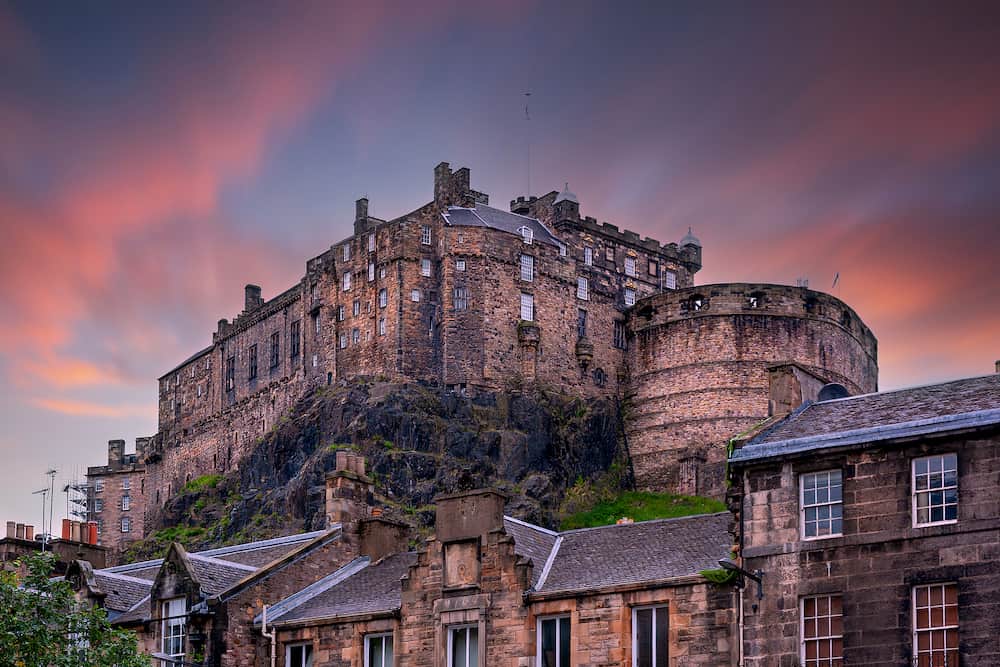
Balmoral Castle
Balmoral Castle, located in Royal Deeside in Aberdeenshire, around 50 miles from Aberdeen, belongs to the British Royal family and is one of the largest in Scotland to visit.
The original building was constructed in the 15th century; however, Queen Victoria, during her reign, decided that this was too small. Therefore, the Balmoral Castle seen today was designed and enhanced by Prince Albert when the Royals brought it in 1852.
After work finished, Queen Victoria lovingly described it as her ‘dear paradise in the Highlands’ and went on to spend several months there each year. Queen Elizabeth II had similar feelings about Balmoral, as she spent a great deal of time on the estate, where she spent her final days.
As it is a private home of the Royals, Balmoral Castle is not wholly open to the public. You can, however, visit the ballroom exhibition, take a safari tour and explore the local wildlife or wander the extensive gardens enjoying the summer pavilion, the hunting lodges, and the vegetable and flower gardens.
For those who enjoy walking, you can also complete one of the many Cairns Walks, including the Prince Albert’s Pyramid Walk, where you will discover the granite pyramid dedicated to the Prince from Queen Victoria on his death overlooking the Cairngorms National Park.
Once you have finished your walk, there is also an opportunity to enjoy a snack or afternoon tea in the onsite tea room before looking around the gift shop.
For those travelling by car, there is a car park right next to the A93 (follow the signs) which is free to use, and then it is either a 10-minute walk through the first, or you could opt to take the free shuttle bus directly to the entrance.
There is no train station near Balmoral, so you would need to take a train to either Perth or Pitlochry and then catch a taxi, while if you are travelling via bus, you need to travel on the Braemer line and get off at the Balmoral stop at Crathie.
Accommodation near Balmoral Castle
Tours to Balmoral Castle
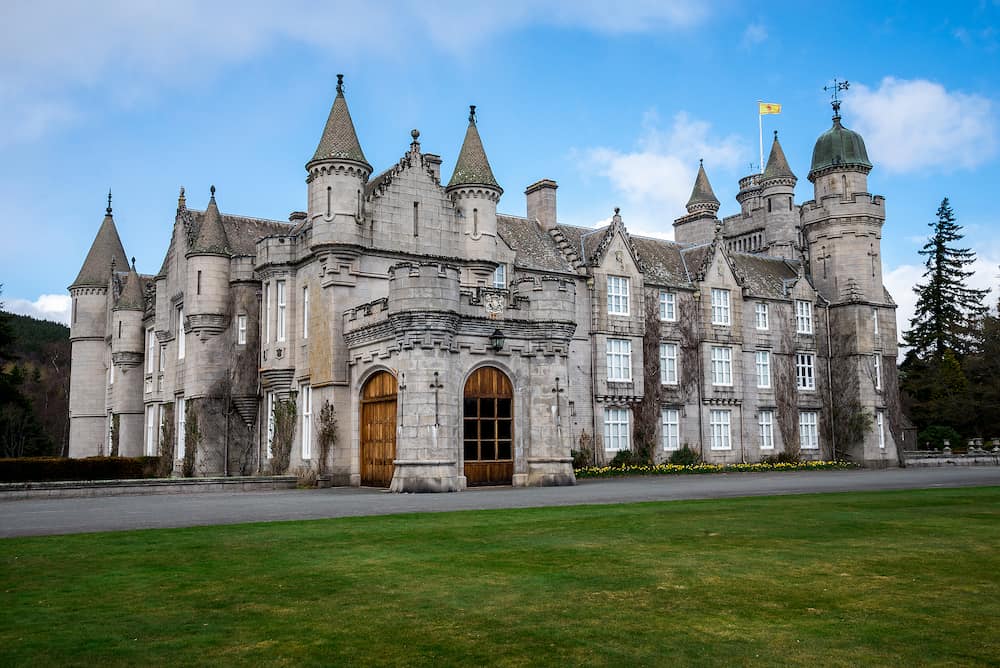
Stirling Castle
Located on Castle Hill, part of a 350 million-year-old rock formation, sits Stirling Castle, which was predominantly built across the 15th and 16th centuries. However, a few structures remain from the 14th and have since been restored to their former renaissance glory.
A one-time favourite residence of Stuart Kings and Queens, Stirling Castle is one of the best castles in Scotland to visit for its rich history. For example, in just 50 years, the castle changed hands between Scotland and England no less than eight times, and the well-known wars of Stirling Bridge and Bannockburn took place close to the castle walls.
Today you can visit the Great Hall built for James IV in 1503, explore the richly decorated rooms of Mary, Queen of Scots or admire the Hunt of the Unicorns tapestries, which are excellent recreations of the originals. You can also visit the Great Kitchen, the Chapel Room, and Queen Anne’s gardens or look out over both Stuc a Chroin and Ben Vorlich in the distance from the top of the castle.
Don’t forget to visit the palace vaults, home to many interactive exhibitions, including the Musician’s Vault, home to many instruments dating back to the 1500s, the Painter’s Vault, the Carvers Vault, the Tailor’s Vault, and the Jester’s Vault. There are also exhibitions on the Wars of Independence, the Royal Chapel burials, and several Castle artists.
For those travelling by road to Stirling Castle, car parking is at a premium, so you may wish to park at one of the many car parks in town and use the park-and-ride service while both train and bus stops are within walking distance.
Accommodation near Stirling Castle
Tours to Stirling Castle
- Loch Lomond, Stirling Castle and the Kelpies from Edinburgh
- Loch Lomond, the Trossachs and Stirling Castle from Glasgow
- Stirling Castle, Loch Lomond and Whisky Trail Small Group Day Tour from Glasgow
- Stirling Castle,Trossachs National and Loch Lomond Day Tour from Edinburgh
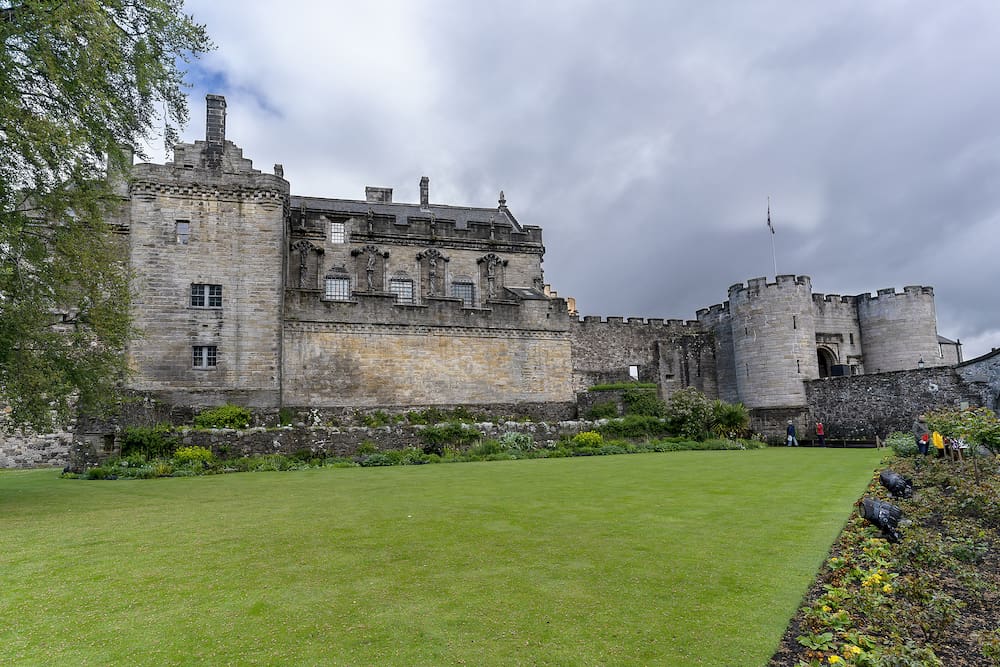
Eilean Donan Castle
Eilean Donan Castle is one of the most photographed in the world, often appearing on postcards. Situated on the Tidal Island of Loch Duich in the Western Scottish Highlands, connected by a causeway and is where three great sea lochs meet.
Believed to be named after the 6th-century saint, Bishop Donan, who visited around 580 AD, Eilean Donan Castle was a 13th-century fortified castle built to protect against the invading Vikings and has had to be rebuilt over time after being partly destroyed in 1719 during the Jacobite uprising.
By the 1900s, after laying in ruins for more than 200 years, it was purchased by Lieutenant Colonel John MacRae Gilstrap, and he went on to spend a further twenty years restoring it.
Once a stronghold of the Clan Mackenzie and a home for Spanish soldiers who supported the Jacobites during the 1700s.
This castle has changed in size over the years, growing and shrinking, with the medieval castle being the largest, with two towers and a wall covering nearly the entire island. It is also a favourite filming location with Highlander and James Bond: The World is not Enough, to name a few.
There is ample parking at the visitor centre if travelling by car, and plenty of bus routes pass by, with Bridge Road End, Dornie, being the closest at just a five-minute walk away.
Accommodation near Eilean Donan Castle
Tours to Eilean Donan Castle
- The Isle of Skye & Eilean Donan Castle from Inverness
- Isle of Skye, The Highlands and Loch Ness- 3 Day Group Tour from Edinburgh
- 3-Day Isle of Skye and Scottish Highlands Small-Group Tour from Edinburgh
- Eilean Donan, Loch Ness & The North West Highlands – 2 Day Tour from Edinburgh
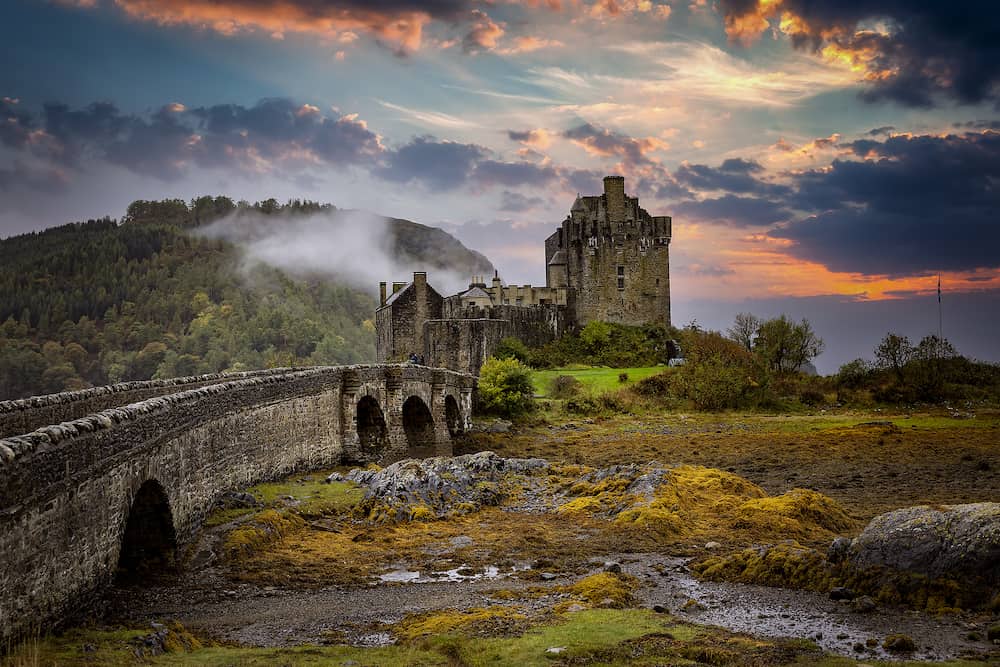
Inveraray Castle
The 18th-century neoclassical elegance of Inveraray Castle, which is still a family home, overlooks Loch Fyne, the longest sea loch in Scotland renowned for its oysters, and is within walking distance of the quaint little town of Inveraray.
Inspired by a sketch by Vanbrugh, who designed Blenheim Castle and Castle Howard, the first stones were laid in 1746 and took 43 years to complete. However, in 1877, a fire devastated part of the castle and resulted in the third floor being added along with conical roofs on each of the corner towers.
Fortunately, many of the priceless Beauvais tapestries were saved and restored at Hampton Court Palace and are now on display in the Tapestry Drawing Room which can be seen during any tour.
Other areas available for the public to explore at Inveraray Castle are the Armoury Hall and the State Dining Room, painted by two French artists, Girard and Guinand, dating back to 1748. There is also the China Turret, with its entrance concealed by wall tapestries, and it is so named because it is home to an extensive porcelain collection.
Downton Abbey fans may also recognise Inveraray Castle as it features as the fictional Duneagle Castle on a Christmas Special.
Accommodation near Inveraray Castle
Tours to Inveraray Castle
- West Highlands, Lochs and Castles Small-Group Day Tour from Edinburgh
- Oban, Glencoe & West Highland Castles from Glasgow
- Standing Stones, Castles and West Highlands Tour from Balloch
- Inverary Castle & Loch Lomond Tour
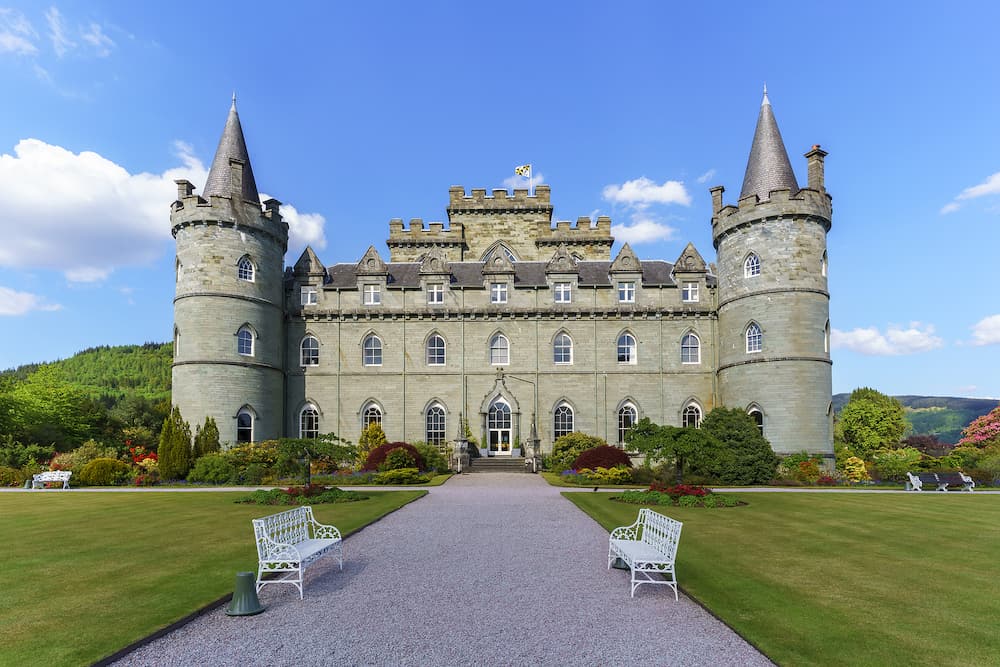
Glamis Castle
Glamis Castle claims to be one of the most beautiful castles in all of Scotland and remains one of the best Scottish castles to visit. The imposing red sandstone walls are impressive as its residents.
This castle was once the childhood home of Queen Elizabeth, the Queen Mother, was the birthplace of Princess Margaret, the younger sister of Queen Elizabeth II, was visited by Mary, Queen of Scots, and has been the ancestral seat of the Earls of Strathmore and Kinghorne since 1372.
Located in Angus, close to Dundee, Glamis Castle was originally a royal hunting lodge, and although a building has been there much longer, the current structure with its pointed turrets is from the 17th century.
It also has a bit of a sinister past, with King Malcolm II being murdered there in 1034, and is today, believed to be one of the most haunted residences in all of Britain. When you walk the halls looking at the period furnishings today, you will learn more about the murders of kings and the witches that were burnt at the stake here.
Also on display at the famous Scottish castle are the colourful walled gardens complete with their Monet-inspired bridge, the Italian Gardens designed by Countess Cecilia, Mother of the Queen Mother, and the ornamental gates, which were added in 1980 to commemorate the Queen Mother’s 80th birthday.
Shakespeare fans can also explore the Macbeth trail, which features several sculptures carved out of Oak, Douglas, and Noble Fir trees once belonging to the estate.
Finally, you can enjoy the delights on offer at the Castle kitchen restaurant, which is open all day and uses seasonal produce grown at Glamis, or perhaps you would like to celebrate Burns Night in this historic setting.
Being just 50 miles from Aberdeen and 12 miles from Dundee, Glamis Castle is easy to reach via car, and parking is included in your entry ticket price while buses run close to Glamis, stopping at Forfar.
Accommodation near Glamis Castle
Tours to Glamis Castle
- Glamis Castle and Bonnie Dundee Tour from Dundee
- Whisky Distillery Trifecta – Macallan – Glenfiddich – Glenlivet – Private Tour
- Glamis Castle and Bonnie Dundee Tour from St Andrews
- Highland whisky tour – Half day from Edinburgh
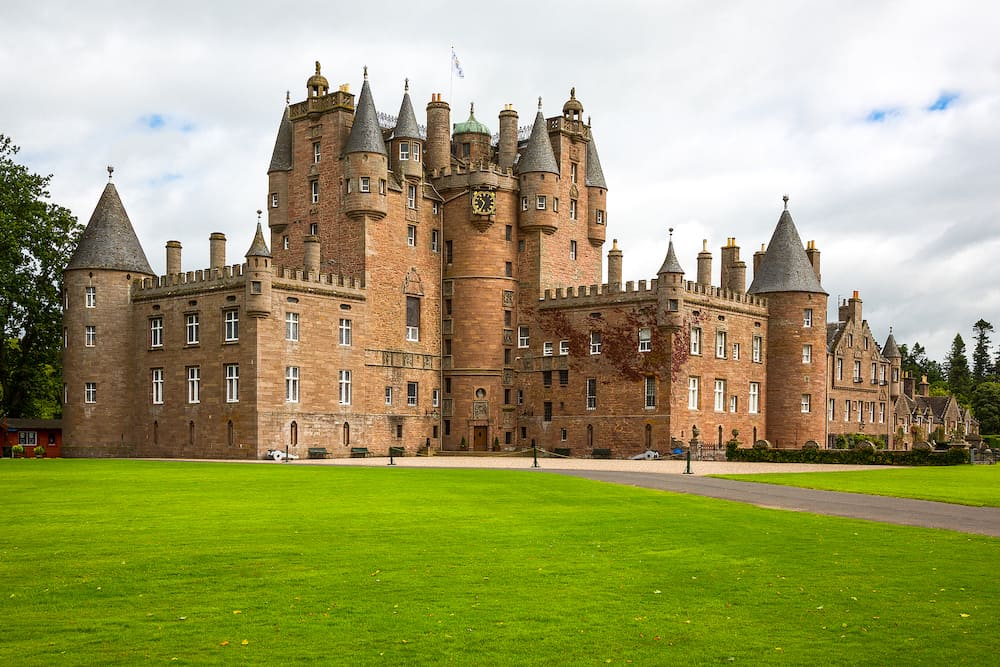
Dunnottar Castle
Located on a cliff top, Dunnottar Castle is a stronghold on the North East coast of Scotland. Sitting on a 160-foot rock formation over the North Sea, these ruins dating back to the 15th and 16th centuries are breathtaking. Even before that time, though, during the Middle Ages, it is believed to have been a fortified site, while back in 400 AD St Ninian established this site as a place of worship.
The first keep was built in 1392 but has been extended since then and, at one point, also housed a lion, a pet of George Keith back in 1593. Dunnottar Castle was another castle visited by Mary, Queen of Scots, during her reign and became the hiding place for the Honours of Scotland, the crown jewels, during Oliver Cromwell’s invasions.
The castle at Stonehaven has been a ruin for some time now, mainly because after it was sold in 1717, anything of value was removed, including floors and ceilings. It wasn’t until Lord and Lady Cowdray purchased it in 1919 that some restoration work took place, and it is the structure seen today now that Dunecht Estates own it.
Dunnottar Castle can be found 20 miles from Aberdeen and just 1.6 miles from Stonehaven, and if travelling by road, there is a free car park available. For those walking during fair weather, there is a lovely coastal walk with stunning scenery available from Stonehaven, while the bus also stops directly outside in the car park.
Accommodation near Dunnottar Castle
Tours to Dunnottar Castle
- Dunnottar Castle and Royal Deeside Small-Group Tour from Aberdeen
- Dunnottar Castle – Small Group Guided Walking Tour
- Dunnottar & Deeside Castle & Distillery Private one Day Tour & Photo Workshop
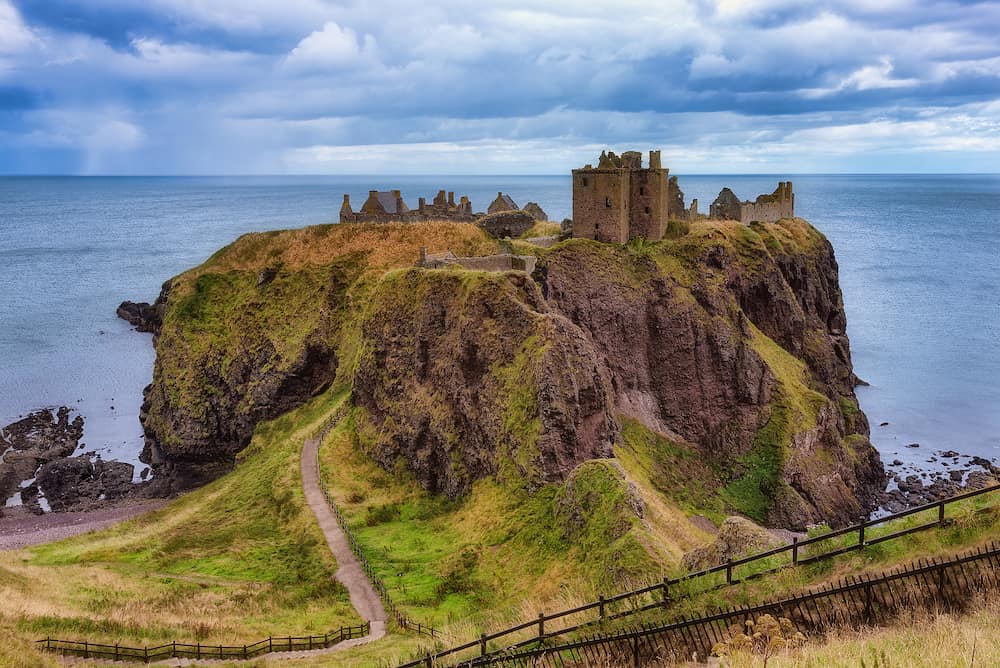
Cawdor Castle
Based in Naim and just 7 miles from Inverness airport, Cawdor Castle, one of the most enchanting in Scotland, dates back over 300 years old. The medieval tower, or keep, was built as a private fortress for William Calder back in 1454 and has a holly tree at its centre which is still on show today.
This keep was then extended over time, and although most of the extensions seen now are from the 17th century, including the moat, the drawbridge, and the turrets, the vaulted kitchen ceiling dates back to the 16th century.
Cawdor Castle, located just 8 miles from where the Battle of Culloden took place, has been home to more than twenty-three generations of the same family and is the fictional home of the Thane of Cawdor in Shakespeare’s Macbeth.
While visiting this castle, you can explore 12 rooms, glancing at tapestries, fine art, ceramics, and sculptures, some of which are up to 3500 years old. Outside, the garden is just as impressive, with a maze, which unfortunately cannot currently be accessed as they are trying to preserve the hedgerows.
There is also an orchid garden, a slate garden designed by James Parker in 2009 using reclaimed materials, plus formal gardens, a vegetable garden, and an arboretum.
Cawdor Castle is completely hidden from the road, making it all the more impressive when you arrive, whether travelling via car or public transport.
There is ample parking available for anyone wanting to arrive by car, while the bus stop by the church in Cawdor is just a seven-minute walk, while Nairn train station is the closest, which is around a fifteen-minute drive away.
Accommodation near Cawdor Castle
Tours to Cawdor Castle
- Culloden Battlefield, Clava Cairns & Cawdor Castle
- Loch Ness,Culloden Battlefield,Cawdor Castle & Much More From Inverness City
- Highland Whisky Tour with a visit to Inverness & Cawdor Castle from Invergordon
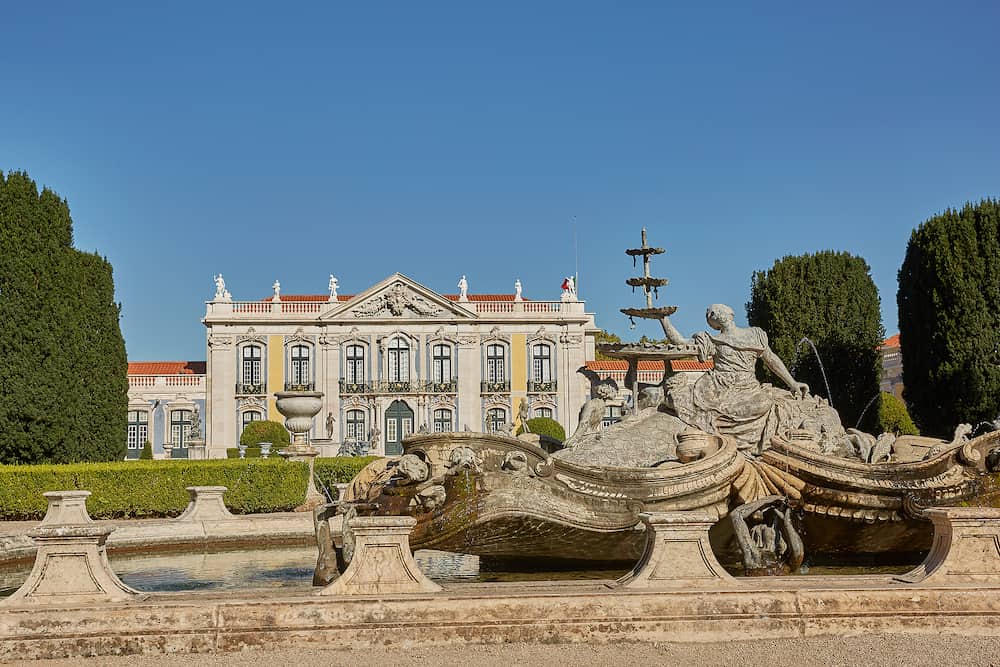
Craigievar Castle
Craigievar Castle, one of the most famous Scottish castles of all time, can be found just six miles from Alford in Aberdeenshire. It stands out due to its pink, fairytale exterior standing seven stories high, which is believed to have inspired Cinderella’s castle at Disney.
Building work started on the iconic tower house back in 1576, and the exterior seen today remains unchanged since the 17th century when it was completed by William Forbes, brother to the Bishop of Aberdeen.
While the National Trust now owns the property, Craigievar Castle was a family home until the 1960s and remains one of the few castles in Scotland to stay in, with cottages located within the estate grounds.
During a castle tour, you will see some Jacobean woodwork in the Great Hall, which is rare to have survived, plus the Stuart Arms over the fireplace. There is also a musician’s gallery and a secret staircase connecting the Great Hall to the High Tower, plus the Queen’s bedroom and servants’ quarters, all of which are open for you to explore.
When you enter the upper floors, you will notice that no artificial lighting has been installed. This is because the former owner requested that no artefact on show should be exposed to artificial lighting and should instead be viewed by the shifting sun. These artefacts include Raeburn portraits, weapons, armour, and rare antiquities.
While outside Craigievar Castle, you can wander around the Glen garden, visit the Victorian kitchen garden or undertake either of the two woodland trails. The grounds are home to a hive of activity with roe deer, brown long-eared bats, pine martens, and Scottish wildcats all calling Craigievar home.
Craigievar is one of the Scottish castles not easily accessible via public transport, with bus services running as far as Alford, Lumphanan, or Aboyne, meaning that you will need to catch a taxi to reach your final destination. For those travelling by car, follow the A980 until you see brown signs for the castle, which direct you up the main drive and will give you your first glimpses of this stunning location.
Accommodation near Craigievar Castle
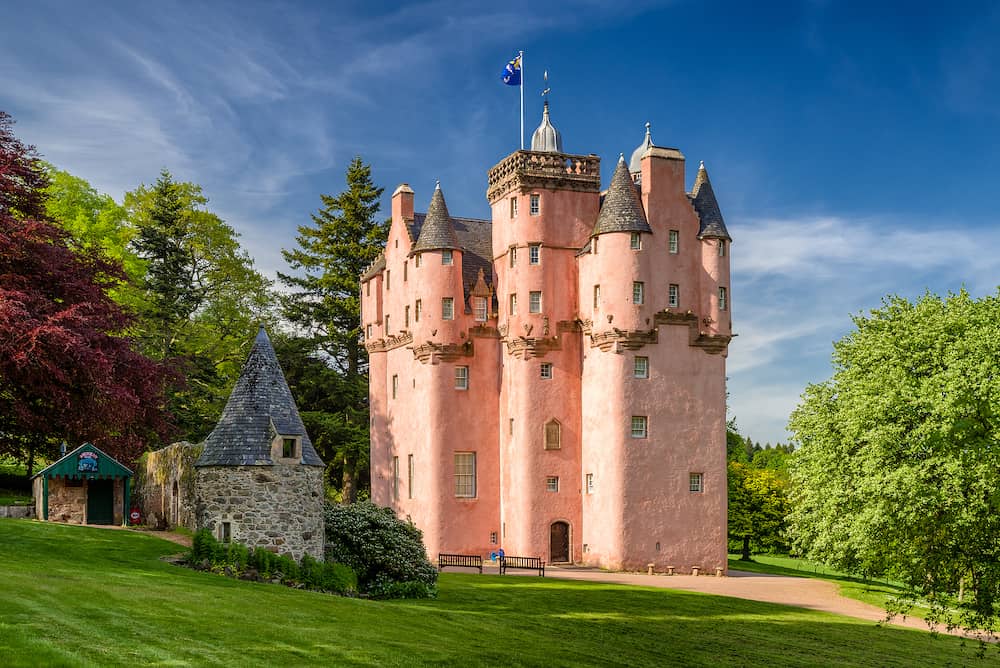
Urquhart Castle
Thought to be on the site of a medieval fortress, the ruins of Urquhart Castle, dating back to between the 13th and 16th centuries, overlook the world-famous Loch Ness. For more than 500 years, this medieval burg played a part in the Wars of Scottish Independence before becoming a Royal castle which was partially destroyed in 1692 to prevent the Jacobite forces from using it before it was abandoned entirely.
Once one of the largest Scottish Castles, Urquhart Castle was a castle desired by both the English and the Scottish, with control frequently moving between the two until it was eventually blown up and left in a state of disrepair.
Today, while wandering the site, you will unearth more than 1000 years’ worth of history centred on the Great Glen in the Scottish Highlands. You can still see parts of the five-storey Grant tower, accessible via a wooden staircase, elements of the Great Hall, and the prison cell said to have held the Bard, Domhnall Donn, for stealing cattle.
If you intend to drive, parking is free, but you need to book online in advance, while for those travelling via bus, this also stops at the car park entrance and is just a short walk to the site.
Accommodation near Urquhart Castle
Tours to Urquhart Castle
- Scottish Highlands, Loch Ness and Glen Coe Day Trip from Edinburgh
- Loch Ness and Caledonian Canal Cruise from Dochgarroch
- The Complete Loch Ness Experience Small-Group Day Tour from Inverness
- Half Day Outlander Stones, Culloden, Urquhart Castle
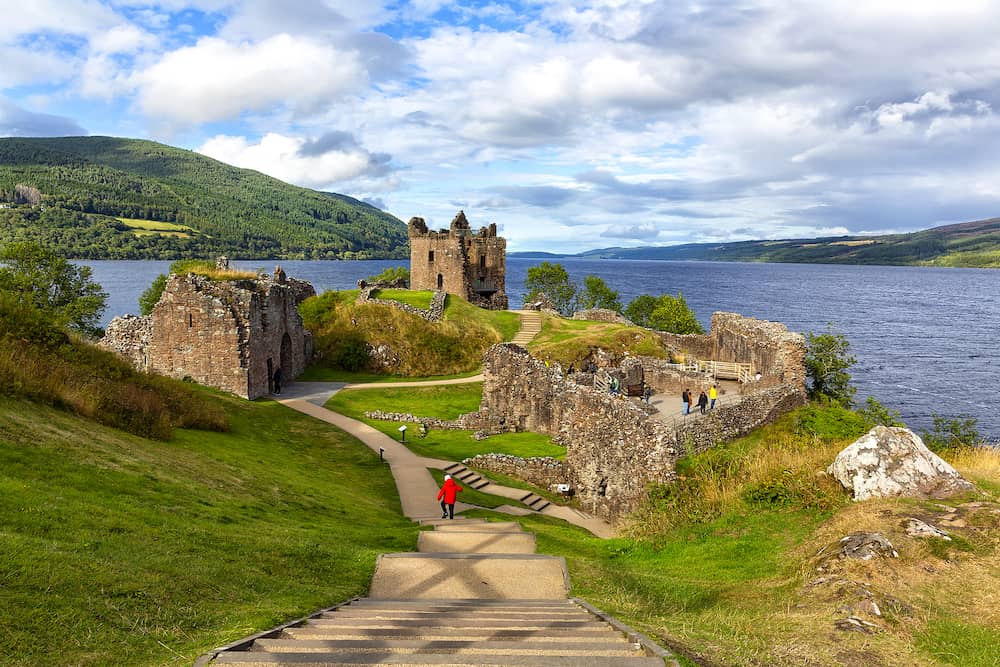
Culzean Castle
Culzean Castle benefits from a cliff-top setting on the Ayrshire Coast and looks out over the Firth of Clyde and the Isle of Arran. Designed by Robert Adam, this 18th-century Neoclassical Georgian-style fortress, set on more than 600 acres, is home to a total of 40 buildings and many secret follies to explore.
Once the home of the Marquess of Ailsa, the chief of the Clan Kennedy, in 1945, Culzean Castle was gifted to the National Trust with only one condition attached. It was agreed that the top floor apartment would remain available to General Dwight D Eisenhower as a thank-you for the role he played during World War II. He went on to stay four times, once during his term as President of the US.
Today, you can wander around one of the best-preserved castles in Scotland, enjoying the architecture and the extensive grounds. Make sure you allow time to see the dramatic centre-piece of the castle – the oval staircase – before you take in the display of flintlock pistols and military swords.
While outside, you could spend hours taking in the deer park, the swan pond, and nearby beaches. If your visit coincides with the summer season, you will also be able to reach the sea caves that disappear at other times of the year underneath the castle itself.
You could easily spend the day at Culzean Castle, taking in all its splendour along with the second-hand bookshop, home farm shop, and cafe, before enjoying an ice cream from the onsite parlour.
For those travelling via public transport, you have not one but two bus stops to choose from (Maybole and Kirkwynd), plus a train station at Maybole, all of which are just a two-minute stroll from the garden entrance.
There are also multiple car parks for those travelling via road situated at Home Farm, the walled garden, and the swan pond, free if you are a National Trust Member.
Accommodation near Culzean Castle
Tours to Culzean Castle
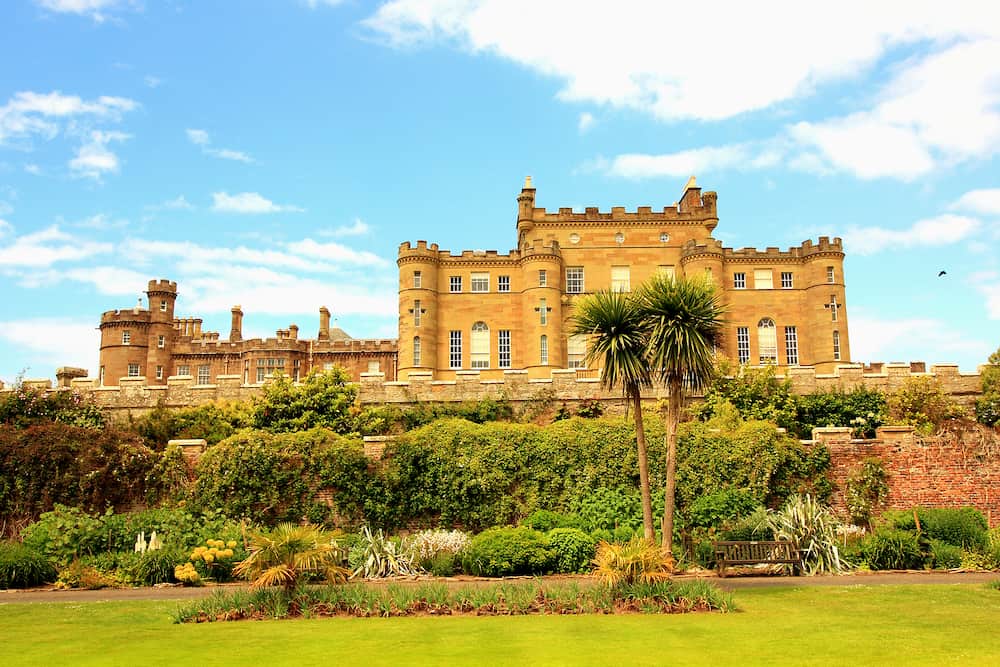
Dunrobin Castle
On the north coast near Golspie in the Scottish Highlands, Dunrobin Castle looks like both a French chateau and an authentic fairy tale castle with its pointed turrets and well-manicured gardens. It is also the largest castle in the northern highlands, with 189 rooms, and dates back to the early 1300s.
While Lord Strathnaver currently owns it, at one time, it belonged to the Sutherland Clan. The early castle was a fortified keep with walls six feet thick and a vaulted ceiling that remained for more than 200 years.
This early castle was extended in the 16th century before being besieged twice during the Jacobite Rising of 1745 because the Sunderland Clan themselves favoured the British government and remained a defensive structure until 1845.
At this point in history, Dunrobin Castle was then transformed into a beautiful home and one of the most stunning Scottish Castles ever to be restored, with interiors being designed by Sir Robert Lorimer, while the outside was designed by Sir Charles Barry, who was inspired by the Palace of Versailles and even includes a croquet lawn.
Today you can wander around Dunrobin Castle, one of the oldest castles in Scotland to be continuously inhabited, and visit the museum, which was at one time the family’s summer house, which will provide you with a further history into the clan.
During your time at the castle, you can watch one of the many falconry shows that take place daily or indulge in afternoon tea in an extremely regal setting.
Dunrobin Castle is 50 miles north of Inverness and just half a mile from Golspie, and for those travelling by car, there is plenty of free parking available. The closest bus stop and train station, Dunrobin, is also only a minute’s walk away.
Accommodation near Dunrobin Castle
Tours to Dunrobin Castle
- John O’Groats, Dunrobin Castle & the Far North from Inverness
- Dunrobin Castle and Glenmorangie Distillery 8 Seater Bus Tour from Inverness
- Dunrobin Castle Cruise Excursion from Invergordon
- Invergordon Shore Excursion Dunrobin Castle,Shin Falls, Dornoch & Loch Fleet
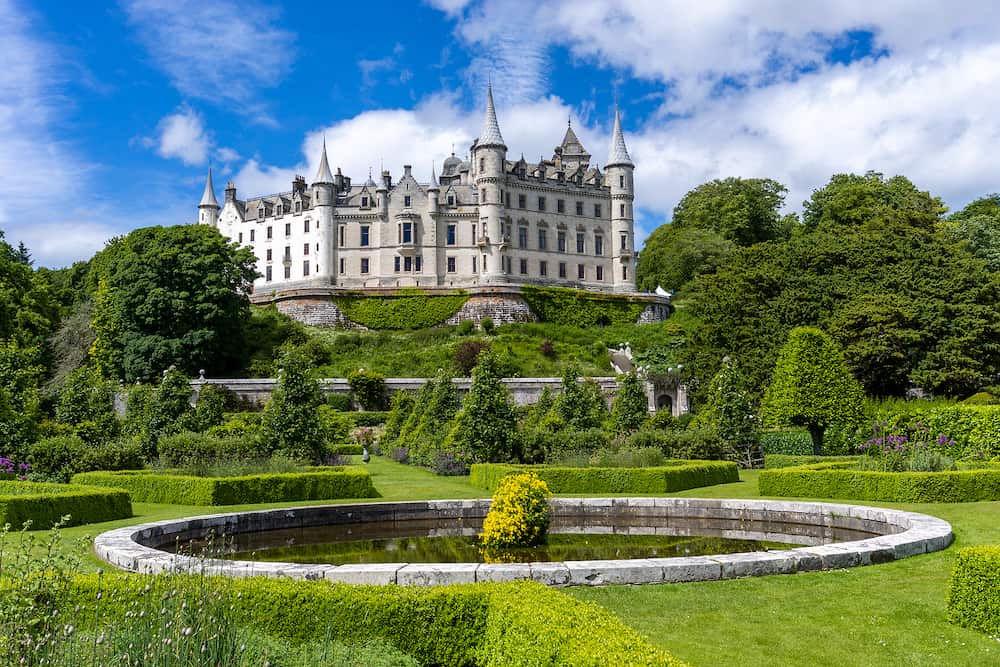
If you’d like to save it for later, please save it to Pinterest.
